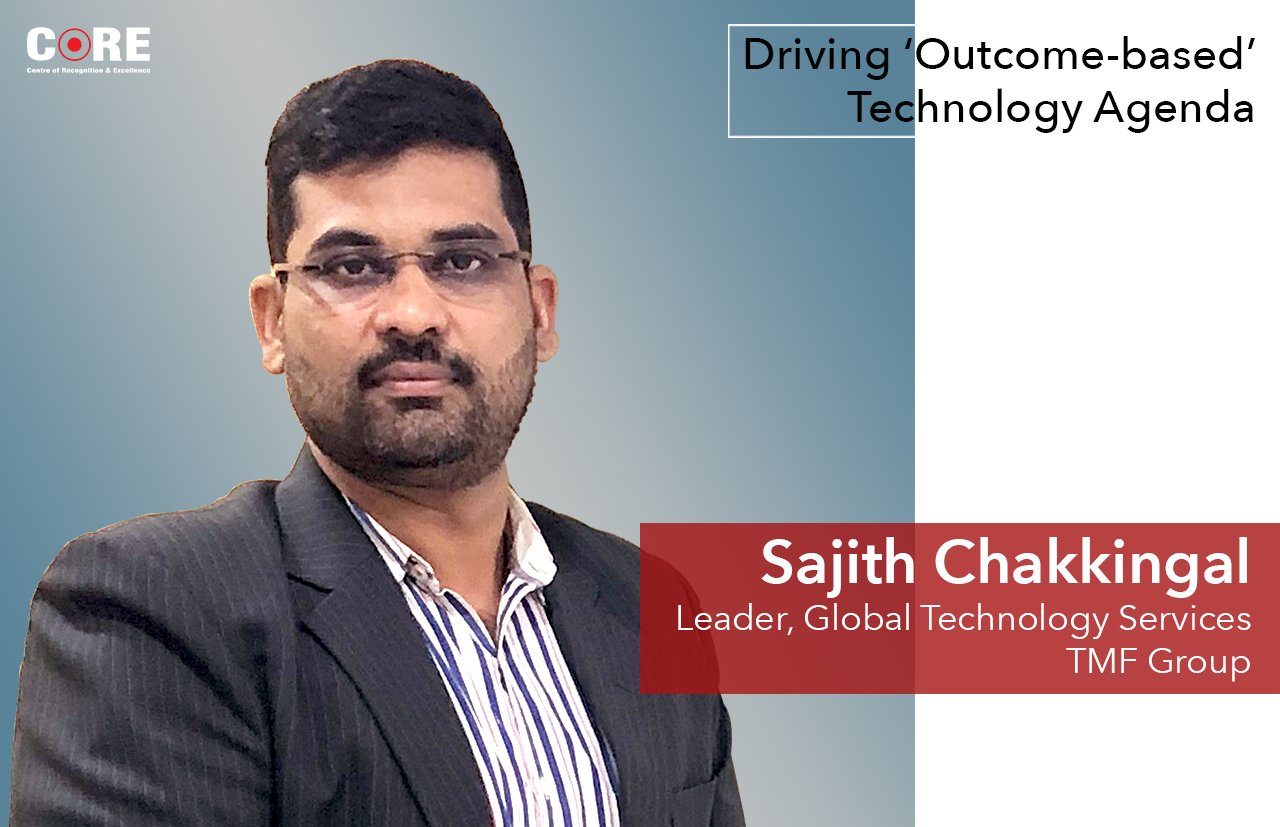Sajith Chakkingal, Leader of Global Technology Services & India Technology Centre, TMF Group, elaborates on the company’s technology transformation roadmap.
TMF, the multinational professional services firm, is a group spread across 83 countries with 125 offices and 8500 employees globally. Sajith Chakkingal, as the Leader of Global Technology Services & India Technology Centre of the company, wears more hat than one. He is responsible for core technology across TMF globally and is also supporting the team at TMF India Tech Delivery Centre.
While carrying a tremendous amount of responsibility on his young shoulders, Chakkingal makes it a point to draw up a more grounded yet scalable long-term technology transformation vision. In this exclusive interview, he talks about the company’s technology roadmap post the global disruption.
Tell us about your technology transformation journey and how is the global disruption influencing your key tech priorities?
There are a few key initiatives we have embarked upon as part of the digital transformation journey. COVID-19 intervened, playing a part in defining our transformation objectives and we’ve been able to go harder and faster than originally planned.
We now view our transformation journey in three phases – 1) before COVID-19, 2) during the pandemic and 3) the other ‘new normal’. Our focus during the pandemic was towards initiatives that add value in a shorter timeframe, with objectives such as shifting to remote working taking obvious precedence. At the same time, we ensured that those initiatives continued to positively contribute to our long-term transformation goals.
We are now preparing for the post-COVID scenario and technology investments are aligned in such a way as to carry forward our existing initiatives. The post-pandemic situation in fact calls for a radical shift from the pre-pandemic scenario. For example, ‘remote friendliness’ has become ‘remote-first’. We are looking at our entire core technology from a perspective of how we can enable or bring in flexible working, enable working from anywhere, anytime etc.
We are also looking at optimising or improving efficiencies on the spends we are making, in terms of technology buying.
How is the shift to ‘remote-first’ models impacting TMF’s customer experience journeys in your opinion?
This whole change, with the outbreak of COVID-19, happened against our wishes. It has really changed the way we serve our customers. For example, technology made it possible for employees to work from wherever they are based. This ensured our customers’ experiences remained positive and were less impacted. We were still able to deliver services on time to our customers. We are successful in enabling the majority of our workforce to operate WFH globally.
The biggest positive outcome, I believe, is that the disruption did not put a full stop to what we are doing with our customers. And that's the real business value.
As an organization which is spread across different geographies, how are you approaching technology consolidation or cloud models?
Cloud is certainly a key focus for us. That said, my key challenge is to optimize cloud infrastructure and investments for a disparate environment like ours, which is spread across 83 countries and so naturally houses a lot of legacy technology.
We are a company that is global in nature but local in operations, because we deal with a lot of ‘localisation’. So, we certainly need to keep the sensitivity of a ‘local approach’ in whatever we do. The need for localisation is therefore a key parameter for cloud deployment as well. Cloud can help us optimize cost and resources, while automating, standardising and consolidating processes and consumption models globally.
As a business technology leader, how do you see your key mandates changing in this context?
What I have tried to bring in is the effectiveness in terms of cost, reliability, and scalability. One should realise that there is always a ‘must-do’ cost in technology that you cannot cut down. All you can do is look at areas where you can optimise as opportunities to innovate. This means setting the groundwork upon which you will self-grow your technology. That's something that I'm working on.
Another aspect I'm trying to do differently here is to bring more standards to all that I'm responsible for, introducing standardisation without impacting what is expected from IT.
And the third element is to make people work or think beyond the technologies they currently operate. I say… “Don't look at technologies, because there are plenty on the market. Instead, look at a service”. My mantra is - move away from technology, look at a service and how you can use various technologies to deliver that service more effectively and scalably.
What is the core technology roadmap ahead for TMF?
My transformation mission is not a large or big statement. It’s about creating a core technology that meets TMF’s requirement today and is scalable enough for tomorrow.
With that, the demand for ‘current and tomorrow’ is… anytime, anywhere, any device with wide access - making all of these useable and making it more effective. Looking at technologies that are cross-functioning, having the same set of objectives that we can achieve, rather than looking at more and more technology acquisitions.


